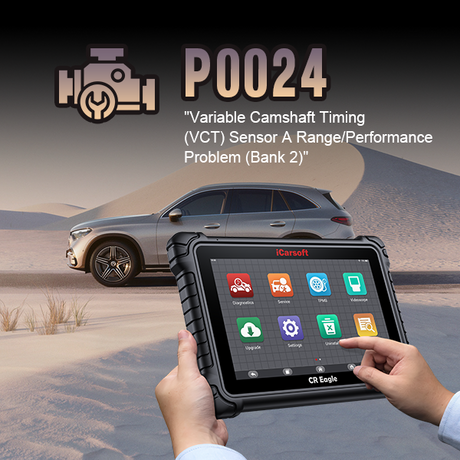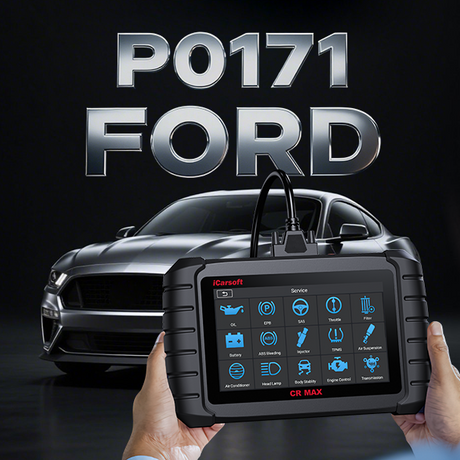Table of Contents
The P2279 OBD-II code indicates an intake air leak on Bank 1, often causing performance issues in vehicles like the Honda Accord or Toyota Camry. This guide explains what P2279 means, its causes, symptoms, and how to fix it, helping you restore your car’s performance.
1. What is P2279?
P2279 is a generic OBD-II diagnostic trouble code (DTC) defined as "Intake Air System Leak (Bank 1)." It means the Engine Control Module (ECM)—the car’s computer—detects unmetered air entering the engine on Bank 1, the side with cylinder 1. This extra air disrupts the air-fuel mixture, leading to inefficient combustion.
How the Intake Air System Works
The intake air system supplies air to the engine for combustion. Sensors like the Mass Air Flow (MAF) sensor measure this air to maintain the correct air-fuel ratio. A leak lets in extra air that the MAF sensor doesn’t measure, causing the ECM to trigger P2279.

2. Causes of P2279 OBD-II Code
P2279 can result from various issues in the intake air system. Here are the most common causes with real-world examples:
- Cracked or Damaged Intake Manifold: A cracked manifold allows extra air to enter. In a 2015 Honda Accord, a damaged intake manifold triggered P2279.
- Loose or Broken Vacuum Hoses: Vacuum hoses can crack or disconnect over time. A 2017 Toyota Camry had P2279 due to a loose vacuum hose near the throttle body.
- Leaking Intake Manifold Gasket: A worn gasket lets air escape. This caused P2279 in a 2014 Ford Escape with high mileage.
- Faulty or Dirty MAF Sensor: A malfunctioning MAF sensor misreads airflow, confusing the ECM. A 2016 Subaru Outback showed P2279 due to a dirty MAF sensor.
- Improperly Installed Aftermarket Air Intake: Aftermarket intakes may not seal properly. A 2018 VW Golf had P2279 after installing an aftermarket cold air intake.
- Faulty Throttle Body Seal: A leaking throttle body gasket can cause unmetered air entry. This was the issue in a 2019 Hyundai Tucson.
3. Symptoms of P2279 in Your Vehicle
P2279 can lead to noticeable engine performance issues. Common symptoms include:
- Check Engine Light On: The dashboard warning light (MIL) illuminates.
- Rough Idle: Engine vibrates or shakes at idle due to an uneven air-fuel mix.
- Poor Acceleration: Sluggish response when accelerating, especially at low speeds.
- Reduced Fuel Efficiency: Extra air causes inefficient combustion, lowering miles per gallon.
- Hissing Noise: A leak may produce a hissing sound from the engine bay, especially under load.
- Engine Misfires: In severe cases, the unbalanced air-fuel ratio may cause misfires.
4. Vehicles Prone to P2279 Code
P2279 is more common in vehicles with complex intake systems or high mileage, where wear and tear can lead to leaks. Examples include:
- Honda Accord (2013-2018): Cracked intake manifold, rough idle.
- Toyota Camry (2012-2017): Vacuum hose leaks, poor acceleration.
- Subaru Outback (2015-2019): Dirty MAF sensor, reduced fuel efficiency.
- Ford Escape (2013-2018): Leaking manifold gasket, hissing noise.
- VW Golf (2015-2020): Aftermarket intake issues, check engine light.
- Hyundai Tucson (2016-2021): Throttle body seal leak, engine misfires.

5. How to Diagnose P2279 OBD-II Code
Diagnosing P2279 requires a step-by-step approach to find the leak or faulty component. Here’s how:
Step 1: Scan for Codes
Use an OBD-II scanner to confirm P2279 and check for related codes (e.g., P0171 for lean condition or P0101 for MAF issues).
Step 2: Listen for Leaks
Start the engine and listen for a hissing sound in the engine bay, which indicates air escaping from a leak.
Step 3: Visually Inspect the Intake System
Check the intake manifold, vacuum hoses, throttle body, and gaskets for cracks, looseness, or damage.
Step 4: Test the MAF Sensor
Use a multimeter to measure the MAF sensor’s voltage (should range between 0.5-5V, similar to testing a light switch). If readings are off, the sensor may be dirty or faulty.
Step 5: Perform a Smoke Test
Use a smoke machine to introduce smoke into the intake system. Look for smoke escaping from cracks or loose connections to pinpoint the leak.
Step 6: Check Aftermarket Parts
If the vehicle has an aftermarket air intake, ensure it’s properly sealed and installed.
Tip: A smoke test is the most reliable way to find small leaks that are hard to detect visually or by sound.
6. How to Fix P2279 on Honda Accord and Other Vehicles
Once you’ve identified the cause, apply these fixes to resolve P2279:
- Replace a Cracked Intake Manifold: Install a new manifold (cost: $100-$300). This fixed the issue in a 2015 Honda Accord.
- Repair or Replace Vacuum Hoses: Replace cracked hoses or reconnect loose ones (cost: $20-$50). Solved the problem in a 2017 Toyota Camry.
- Replace the Intake Manifold Gasket: Install a new gasket (cost: $30-$100). This resolved P2279 in a 2014 Ford Escape.
- Clean or Replace the MAF Sensor: Clean the sensor with MAF cleaner or replace it (cost: $50-$150). Fixed a 2016 Subaru Outback.
- Reinstall Aftermarket Air Intake: Ensure proper sealing or revert to the stock intake (cost: $0-$100). Corrected the issue in a 2018 VW Golf.
- Replace Throttle Body Gasket: Install a new gasket (cost: $20-$80). Fixed a 2019 Hyundai Tucson.
7. Preventive Measures for P2279
Prevent P2279 by maintaining your intake system with these tips:
- Inspect the intake manifold and vacuum hoses during routine maintenance (every 30,000 miles).
- Clean the MAF sensor annually with a dedicated cleaner to avoid false readings.
- Ensure aftermarket air intakes are installed correctly and sealed properly.
- Check the throttle body and gaskets for wear during oil changes.
- Use high-quality replacement parts to avoid premature failures.
8. P2279 Diagnostic Summary
The P2279 OBD-II code signals an intake air leak on Bank 1, often caused by cracked manifolds, vacuum hose leaks, or faulty MAF sensors. This guide provides steps to diagnose and fix P2279 in vehicles like the Honda Accord and Toyota Camry, helping you improve engine performance and fuel efficiency.












